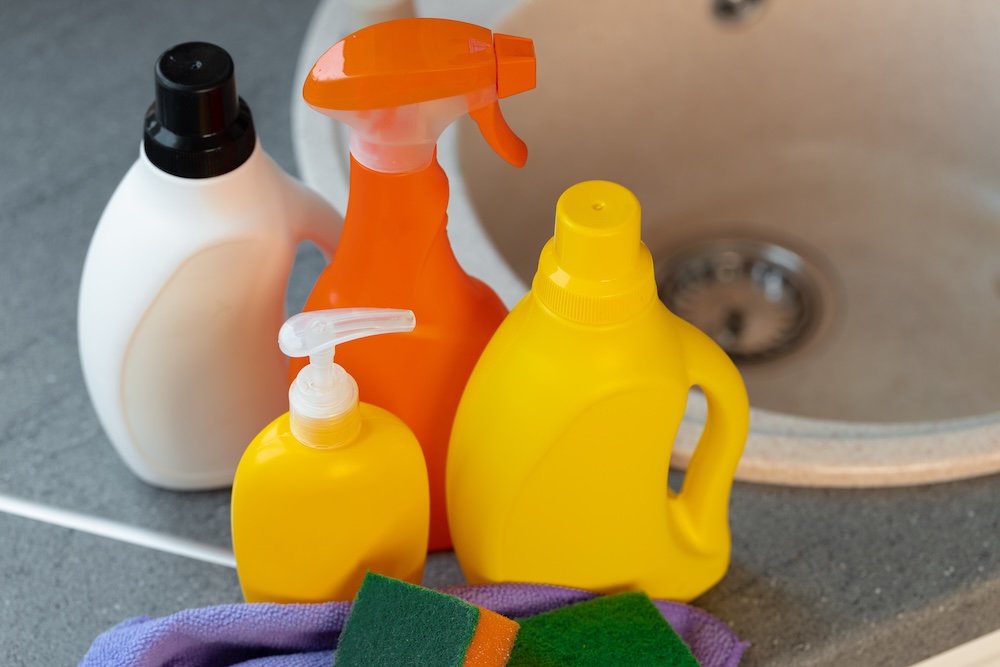The air smells fresh. The counters sparkle. The candle flickers softly. It feels clean — comforting, even. But behind that familiar scent and shine lies a quiet contradiction: much of what we associate with “clean” is anything but.
From the fragrances in detergents to the fumes from disinfectants, invisible pollutants hide in plain sight — not in factories or freeways, but in the very places we’re told are safe.
How “Clean” Became a Brand
Cleanliness once meant health — water, air, and living spaces free from disease. But as consumer culture evolved, clean became an aesthetic: a smell, a shine, a feeling sold in a bottle.
The problem? Many of the products that promise cleanliness introduce pollution instead of removing it.
Manufacturers learned that people equate “clean” with fragrance and foam — sensory cues that trigger reassurance. But those same cues are often powered by chemicals linked to respiratory irritation, hormone disruption, and long-term environmental harm.
In chasing the appearance of purity, we’ve built an industry on invisible contamination.
The Hidden Pollutants of Home
1. Fragrance and Air Fresheners
The signature scent of “fresh linen” or “spring breeze” often comes from volatile organic compounds (VOCs) — chemicals that evaporate easily and linger in the air.
Studies from the Environmental Working Group show that common air fresheners can emit over 100 different VOCs, some of which contribute to indoor smog and can trigger asthma or headaches.
Fragrance ingredients are rarely disclosed, protected under “trade secret” laws. What we think of as freshness may actually be chemical haze.
2. Cleaning Products and Disinfectants
Bleach, ammonia, and synthetic surfactants make surfaces look spotless — but at a cost. When mixed or overused, they release gases that damage both lungs and indoor air quality.
Even “green” cleaners can contain quaternary ammonium compounds (quats) — linked to antimicrobial resistance and skin irritation.
Many of these chemicals wash down drains, entering water systems that were never designed to filter them out.
3. Candles, Incense, and “Cozy” Pollutants
Scented candles and incense sticks release soot particles and ultrafine matter, particularly when burned in enclosed spaces. Paraffin-based candles — made from petroleum — emit similar pollutants to diesel fumes.
The glow might feel comforting, but the air quietly fills with invisible residue.
4. Fabrics and Furniture
Stain-resistant coatings, wrinkle-free finishes, and flame retardants all rely on synthetic chemistry — often involving PFAS, the “forever chemicals” found in water, blood, and soil across the world.
Even small exposures add up over time, especially indoors where air circulation is limited.
5. Plastics and Packaging
Plastic containers, synthetic sponges, and vinyl flooring release microplastics and phthalates — endocrine disruptors that interfere with hormones and fertility.
Ironically, many cleaning tools themselves are polluting agents.
The Air Inside
Indoor air can be two to five times more polluted than outdoor air, according to the U.S. Environmental Protection Agency.
We clean, spray, and sanitize to feel safer — yet most of what we release into our homes never truly leaves.
We’ve mistaken the illusion of clean for the essence of it.
Why We Don’t See It
Part of the illusion is cultural. Clean has been marketed as comfort — a reassurance that order and control are possible. We equate “smells nice” with “is safe.”
But true cleanliness isn’t scented. It’s silent.
It’s the absence of harm, not the presence of perfume.
Breaking the illusion means seeing how deep the conditioning runs — and realizing that clean doesn’t need chemicals to feel real.
What True Clean Really Means
1. Transparency Over Fragrance
Choose unscented or naturally derived cleaners with full ingredient disclosure. Real freshness doesn’t need masking scents.
2. Simplify Your Products
One or two multi-purpose cleaners made from simple, biodegradable ingredients (like vinegar, baking soda, or castile soap) can replace a cabinet full of specialized products.
3. Ventilate Often
Open windows daily when possible. Let the air exchange. Fresh air is still the most effective detoxifier on Earth.
4. Choose Natural Over Synthetic Materials
Select furniture, bedding, and clothing made from organic cotton, wool, or untreated wood. Avoid coatings or finishes marketed as “stain-resistant” or “nonstick.”
5. Relearn the Scent of Clean
Clean doesn’t smell like flowers or citrus. It smells like nothing at all — or like nature itself: air, earth, sunlight, and time.
The Deeper Lesson
The illusion of clean reflects something larger — our tendency to prioritize appearances over authenticity. We chase the surface because it’s faster, simpler, prettier.
But real cleanliness — like real ethics — begins beneath the surface. It’s quiet, intentional, and often invisible.
When we strip away the artificial shine, what’s left is clarity.
And clarity, not chemical fragrance, is what truly refreshes a home — and a life.
Final Thoughts
The illusion of clean is one of the great paradoxes of modern living: we contaminate our spaces in pursuit of purity.
But every illusion can be undone. By questioning the products we use and the promises they make, we reclaim what “clean” truly means — not sterile, not perfumed, but alive.
Because clean should never come at the cost of the air we breathe.









Reader Interactions